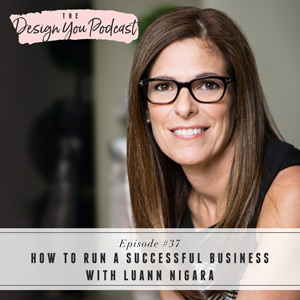
It’s been a little while since I’ve had a guest on the show, but today I have LuAnn Nigara, an amazing, savvy businesswoman who also happens to be in the design industry, on to talk about how to run a successful business!
LuAnn is a spectacular woman who has been in business for over three decades. She’s got a wonderful book out, The Making of a Well-Designed Business that we’re discussing throughout the show, and you’re going to find so much inspiration and motivation through LuAnn’s stories and tips on how to run a business successfully. She’s sharing literally everything you need to know about entrepreneurship in any creative industry. This is going to be invaluable to accelerating your business.
Join me for a super informative and fun conversation I had the pleasure of having with LuAnn this week! Listen closely to her advice and you’ll definitely be a step closer to running the life and business you’ve always dreamt of!





